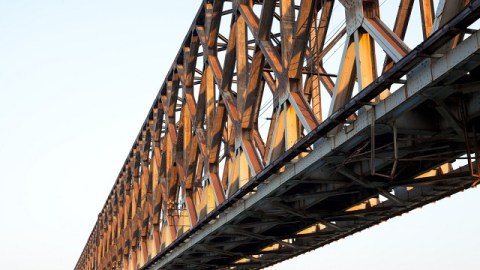Putting Bridges And Roads On The Internet Of Things

What’s the Latest Development?
In the UK, a design team recently demonstrated the Weightless standard — a wireless protocol using white-space frequencies between TV channels to communicate between machines — on a model bridge to show how such models could be used to warn officials of metal fatigue or other trouble areas that could cause a bridge to collapse. It was the first public demonstration for Weightless, which has signals that travel farther than other communication protocols like Bluetooth or wi-fi. Because it also uses unlicensed spectrum, users could avoid paying data fees to carriers.
What’s the Big Idea?
Writer Stacey Higginbotham says that Weightless typifies one of the better goals of the Internet of Things, but there are several major hurdles in the way. For example, “not every country has implemented white spaces standards…[I]n the US it’s unclear how widespread the spectrum will be.” She also mentions the possibility of what could happen if a stress is reported: “[D]oes the government shut it down?…[Or maybe] given the data, the bridge should shut down on days when wind speeds hit 50 mph or more.” Ultimately, she says, we should be thinking about how self-aware infrastructure and the data it produces “will change our approach to safety and even allocating transportation spending.”
Photo Credit: Shutterstock.com





